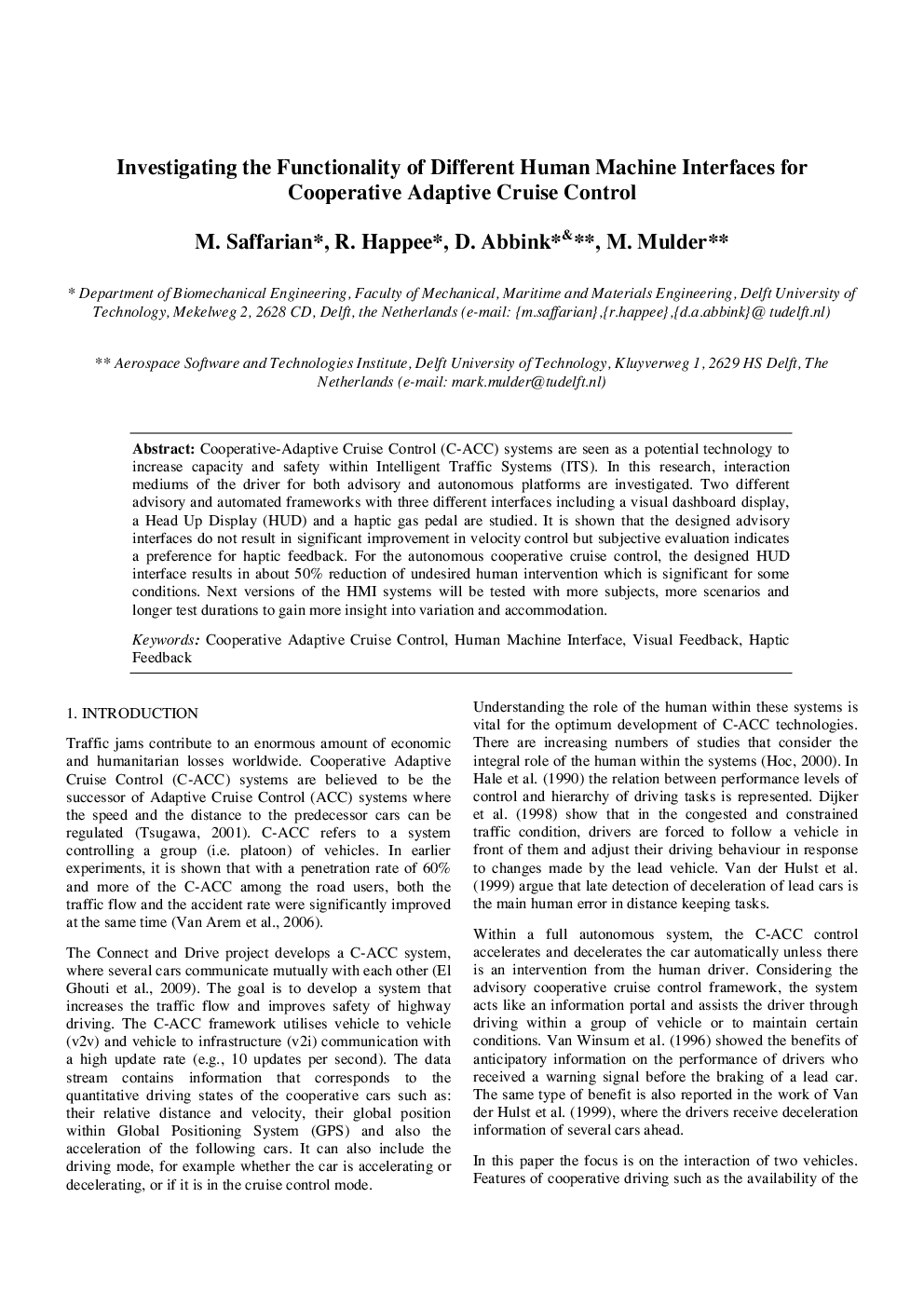| کد مقاله | کد نشریه | سال انتشار | مقاله انگلیسی | نسخه تمام متن |
|---|---|---|---|---|
| 709961 | 892099 | 2010 | 6 صفحه PDF | دانلود رایگان |

Cooperative-Adaptive Cruise Control (C-ACC) systems are seen as a potential technology to increase capacity and safety within Intelligent Traffic Systems (ITS). In this research, interaction mediums of the driver for both advisory and autonomous platforms are investigated. Two different advisory and automated frameworks with three different interfaces including a visual dashboard display, a Head Up Display (HUD) and a haptic gas pedal are studied. It is shown that the designed advisory interfaces do not result in significant improvement in velocity control but subjective evaluation indicates a preference for haptic feedback. For the autonomous cooperative cruise control, the designed HUD interface results in about 50% reduction of undesired human intervention which is significant for some conditions. Next versions of the HMI systems will be tested with more subjects, more scenarios and longer test durations to gain more insight into variation and accommodation.
Journal: IFAC Proceedings Volumes - Volume 43, Issue 13, 2010, Pages 25-30